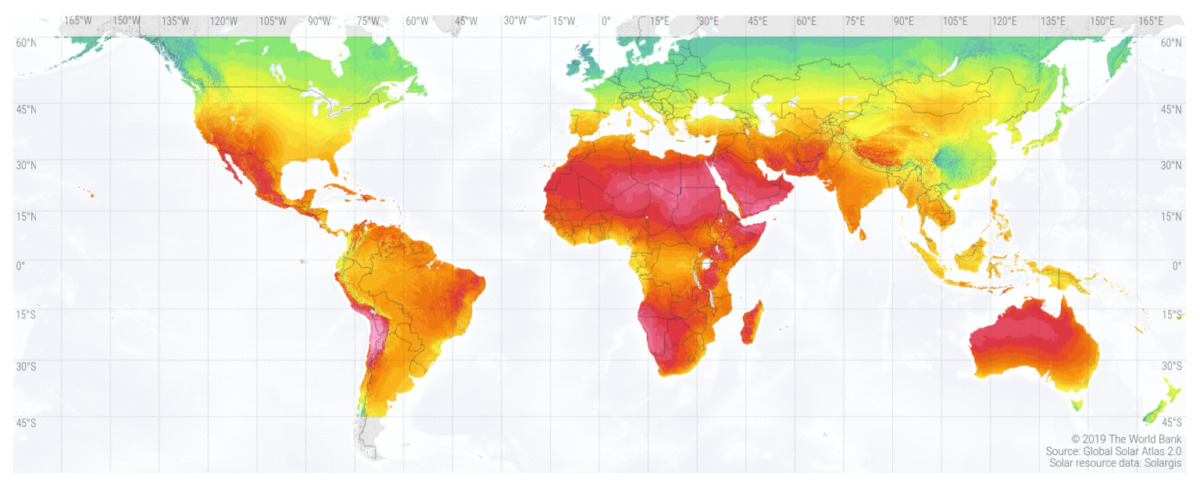From pv magazine global
An international research team has investigated how overirradiance (OI) may impact the performance of PV installations at low- and mid-latitudes and have found several issues may arise when OI conditions last more than one minute and at ambient temperatures above 30 C.
These events may affect the operating performance of photovoltaic plants, the stability of the electrical grid, and the efficiency of inverters. These effects are due to the increase and drastic fluctuation of irradiance, which can vary by more than 900 W/m2.
“To our estimation, the industry in the last decades, the PV industry, has been neglecting overirradiance, possibly due to unawareness or the belief that these events are rare and isolated,” the research’s lead author, Marco Zamalloa, told pv magazine. “We ourselves were not aware of such events before seeing them in our irradiance data a few years ago. However, since we are relatively new to this topic, we cannot say with absolute certainty whether some PV energy industry branches and project developers now consider these overirradiance conditions.”
According to Zamalloa, OI conditions are common and occur everywhere with cloud formation. “They can be imagined as a wandering focal point of a magnifying glass,” he further explained. “With the movement of the cloud, it wanders over the earth’s surface. We become only aware of the irradiance enhancement when the focal point passes a sensor.”
In the paper “Overirradiance conditions and their impact on the spectral distribution at low- and mid-latitude sites,” published in Solar Energy, Zamalloa and his colleagues analyzed the spectral distribution of OI conditions in Lima, Madrid, and Berlin using spectroradiometers, tilt and azimuth angles, and sampling interval. They measured, in particular, the spectral distribution of solar irradiance in W/m2/nm, ranging from 350 to 1050 nm, via two years of measured spectral data.
Through their analysis, they found that OI conditions cause red-shift and cloud a blue-shift of the clear-sky spectrum. “The red-shift caused by overirradiance conditions results in different spectral distributions, depending on the average photon energy of the clear sky,” they explained, adding that the spectral red-shift indicates a cloud-enhancement of the direct normal irradiance.
“We believe the photovoltaic industry requires a quantitative evaluation of the impacts of overirradiance on the operation of photovoltaic systems, which are just beginning to be carried out,” co-author Jan Amaru Töfflinger said. “The sudden change in irradiance makes it necessary to improve the response time of the inverters and the MPPT algorithm, both to take advantage of the increase in irradiance and to avoid heating the cables, fuses, and photovoltaic modules due to the high current generated by the overirradiance events.”
Töfflinger also stressed that overirradiance conditions are frequent in Brazil and can have technical and economic effects on photovoltaic plants. “We have contacted colleagues from Brazil, where, so far, most papers have been written regarding the impact of overirradiance conditions on PV plants,” he concluded. “They say they are quite aware of the potential risks and are taking precautions in sizing the inverter and protective fuses.”
The research group is formed by scientists from the Pontificia Universidad Católica del Perú, Germany’s Helmholtz-Zentrum Berlin für Materialien und Energie GmbH, and the University of Jaén in Spain.
This content is protected by copyright and may not be reused. If you want to cooperate with us and would like to reuse some of our content, please contact: editors@pv-magazine.com.









Both irradiance and thermal conditions are the subject of a lot of PV industry research. Thus why on earth cite a researcher new to the field who admits: “However, since we are relatively new to this topic, …” with a headline like “may affect … the stability of the electrical grid” at all? That is only giving the myriad of nay-sayers something like “PV causing grid instability” as being reported when it is a stupid claim because “stability” is is an entirely different thing from “efficiency” of PV output or whether a single plant is on or off line — the grid operators must ALWAYS account for such things as individual generators dropping offline due to the ever present possibility of an inverter/equipment failure of every sort. Sure it is something to take into consideration and work to fully eliminate, but any claim of causing instability of the grid must be underpinned by far greater issues than this.
Sorry to be negative as this reporting is almost always excellent, but headlines with wild claims like “may affect … the stability of the electrical grid” are completely misleading and do not at all help the industry.
Agreed with Rick about the sensationalist angle.
Please report actual data as well. It doesn’t take a month of videoing a prism for a few days and reporting the statistics.
Reporting mixed cloud conditions peak power output, that data would be lovely and should be specified by all panel mfrs.
I’ll ask some youtubers to do the actual asking and reporting